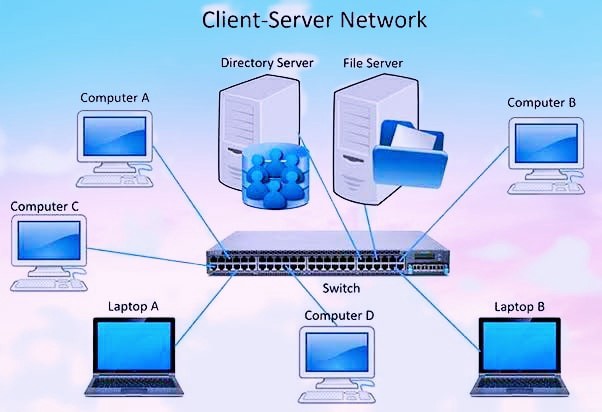FTC disclaimer: This post contains affiliate links and I will be compensated if you make a purchase after clicking on my link.
In networking, you will frequently encounter two terms: “Peer-to-Peer Network” and “Client-Server Network.”
The one common thing on both networks is that both “Peer-to-Peer Network” and “Client-Sever Network” share resources and transfer files from one computer to another.
The main difference between Peer-to-Peer Network and Client-Server Network is that the nodes in Peer-to-Peer Network are used to provide and request services.
Whereas the one node in Client-Sever Network is acting as a client that can only request services, and the other node on the other side can serve the request.
So, from the above understanding, it is clear that each node can act as a client or server in Peer-to-Peer Network. Wheres, the communication in Client-Server Network can only be established when one side is client, and the other side is server.
Moreover, multiple clients can request services from a single server, or multiple servers can provide resources to a single client.
Let’s look into the more profound understanding of Peer-to-Peer Networks and Client-Server networks.
What is Peer-to-Peer Network?
Peer-to-Peer Network is a combination of multiple nodes joined together to form a network, and each node can act as a server or client if needed.
The nodes that are connected in Peer-to-Peer Network are generally termed as Peer. Moreover, you need to understand that there is no centralized server in Peer-to-Peer Network. The resources are typically distributed into multiple nodes.
So, when you request resources, they take multiple parts from multiple sources (peers) and are assembled to form a complete file on your computer. Later, it appears as a download file on your computer.
The nodes that are providing services are registered and maintained as a centralized resource lookup index. It changes frequently and is supported with the connected nodes. The disconnected nodes need to re-establish the connection so that they can provide as well request services.
The advantage of using a Peer-to-Peer Network is that it is easier to maintain and does not require a centralized server. Moreover, it doesn’t need any expert to maintain the connection. Also, it doesn’t require any hardware to an established relationship.
The good part of using a Peer-to-Peer Network is that it doesn’t depend on a single machine, so the loss of files can be requested from other nodes available in a network.
The disadvantage of using a Peer-to-Peer Network is that it is not reliable and secure. And, if you are relying on some files, then you need to maintain your backups.
What is Client-Sever Network?
The Client-Sever Network has separate client and server nodes, the client can request services, and the server will respond to requested services.
Moreover, the client can be a device or program such as laptops, computers, smartphones, web browsers, etc. And, the server can be a device or program that can provide services such as access to files, databases, web pages, and much more.
Also, Client-Sever Network requires reliable sources that can serve the request initiated by the client computer.
The Client-Sever Network works in a pattern. It is initiated with the client request, and then the server accepts the request and responds to the requested file. After receiving files or resources, the client sends an acknowledgment, and then the connection is terminated.
The advantage of using Client-Sever Network is that it is reliable, secure, and can maintain backups. The disadvantage of using Client-Sever Network is that it is difficult and costly to maintain. Also, if the connection gets disconnected, then you have to initiate the request again.
Difference between Peer-to-Peer Network and Client-Server Network
Functionality
The main difference between Peer-to-Peer networks and Client-Server networks is the way they function. The Peer-to-Peer Network has distributed application architecture that partitions and distributes workloads and tasks among peers.
The Client-Server Network is based on distributed application structure that constitutes a server that provides resources or services and the client that requests services.
Network Structure
The Peer-to-Peer Network has a decentralized network structure, whereas the Client-Server Network is based on a centralized network structure.
Accessibility and Reliability
The functionality of the Client-Server Network may get disrupted because of the failure of the server. Also, the establishment of connection requires some time, and accessing files requires more extended time.
On the other hand, the Peer-to-Peer Network is not dependent on the server; if one source fails, it will switch to another source. The establishment of connection and access to files doesn’t require much time.
Cost and security
The Peer-to-Peer Network is less costly and doesn’t require any hardware to maintain the network. But, it is less secure and stable. Whereas Client-Server Network is more scalable and safe, setting up hardware equipment to run a network is expensive.
Conclusion
The difference between Client-Server networks and Peer-to-Peer networks makes you aware of a beneficial network for your project.
Both Peer-to-Peer networks and Client-Server Network demands different network setups, and they differ in inaccessibility and reliability.










